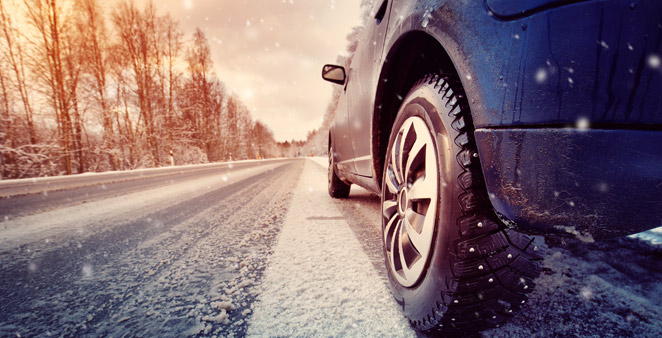
Lucky for Hoosiers, salt helps keep our roadways drivable even when Jack Frost has other plans. According to the Indiana Department of Transportation (INDOT), more than 1,037 snowplows and 1,832 snowplow drivers work to keep Indiana’s more than 30,500 lane miles of state highways clear. That doesn’t include main or side streets! During the 2016-2017 winter, INDOT used 164,700 tons of salt; the five-year average is 288,562 tons.
While salt is good for the roads, it can be very bad for the cars on those roads. That magical substance used for de-icing can also de-paint your car. Saline streets can wreak havoc on the undercarriage and body of a vehicle, eating away at paint, causing rust and opening the door to more serious issues.
A good part of winter is under our belts, but unfortunately, more is yet to come. It is a great time to give your car some attention and wash off all that roadway gunk and grime.
Here are some tips to show your car the love all season long and ensure its wellbeing come spring:
- Get regular car washes! Spray your car down at least once a week in snowy conditions, and visit a car wash that targets the undercarriage at least once a month and after winter storms. It may help to view this expense as required vehicle maintenance, as it could save you money on costly damages later.
- If your car exceeds 8 years old, it needs some extra TLC. Several years of exposure to winter road salts can take its toll. According to the National Highway Traffic Safety Administration (NHTSA), vehicle models made in 2007 and earlier are especially susceptible to brake pipe corrosion due to salt exposure. Have a mechanic regularly inspect for corrosion, and take notice of how your brake pedal feels in cold weather. Any changes could indicate a leak in the brake pipes.
- Use a synthetic wax to provide a protective barrier from harsh salt.
- Once spring arrives, thoroughly detail the exterior so that salt doesn’t sit on the surface.
- Prep for winter weather early next season, making sure to pay special attention to any chips or scrapes in the paint, as those areas will be more susceptible to rust.
Sources:
Indiana Department of Transportation www.in.gov/indot
Kentucky Farm Bureau Insurance
National Highway Safety Administration www.nhtsa.gov
Inside Story is for educational and informational purposes only. Inside Story is compiled from various sources, which may or may not be affiliated with our family of companies, and may include the assistance of artificial intelligence. While we strive to provide accurate and reliable content, we make no warranties or guarantees about its completeness, accuracy, or reliability, and are not responsible for the content of any third-party sources or websites referenced herein. The inclusion of any content does not establish a business relationship or constitute our endorsement, approval, or recommendation of any third party. Testimonials and examples provided are for illustrative purposes only and do not guarantee future or similar results or outcomes, and may not consider individual circumstances, goals, needs, or objectives. Inside Story does not provide legal, tax, or accounting advice. For individual guidance, please consult a qualified professional in the appropriate field.
Coverages subject to policy terms, conditions, and exclusions. Subject to underwriting review and approval.